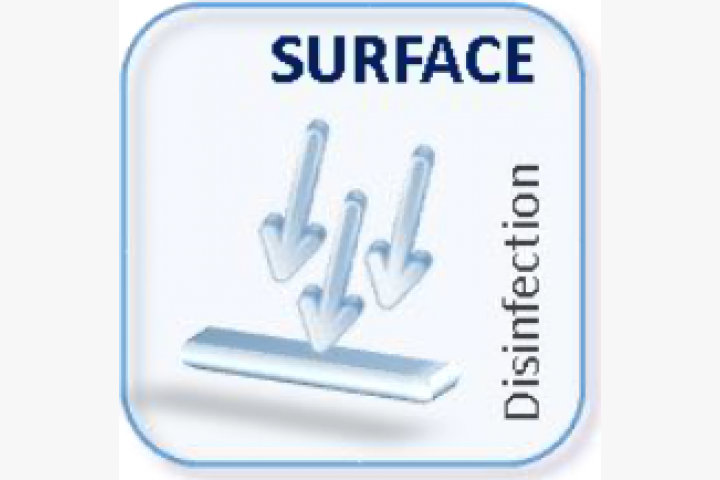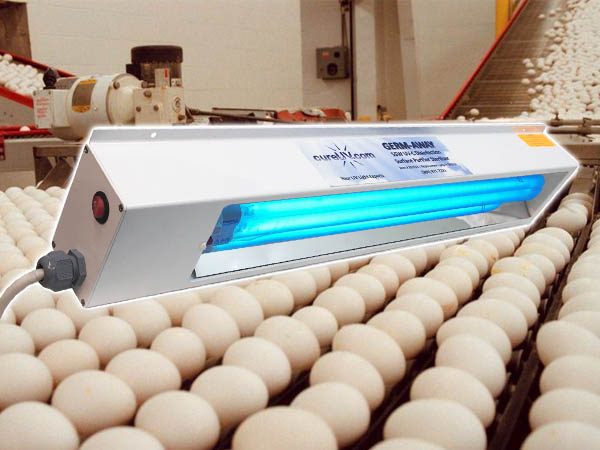UV Surface Disinfection Techniques: Optimizing Effectiveness for Germ-Free Spaces
UV Surface Disinfection Techniques: Optimizing Effectiveness for Germ-Free Spaces
Blog Article
UV Sanitation: The Cutting-Edge Modern Technology Changing Hygiene Practices
In the realm of cleanliness techniques, one modern technology has actually emerged as a game-changer: UV disinfection. From healthcare settings to food processing, UV sanitation is making its mark in numerous sectors.
Just How UV Sanitation Functions
UV sanitation functions by making use of ultraviolet light to damage or inactivate bacteria, supplying a highly reliable and chemical-free technique of cleanliness. This modern technology utilizes the power of short-wavelength UV-C light, which is capable of harming the DNA and RNA of microorganisms, hence making them incapable to cause and reproduce injury.
The procedure begins with the installment of UV disinfection systems, which consist of UV lamps that send out UV-C light. These lamps are strategically put in locations where microbial contamination is a problem, such as water therapy plants, healthcare facilities, labs, and food handling centers.
When microbes are subjected to UV-C light, the photons permeate their cell walls and get to the DNA and RNA inside. The high-energy UV-C photons interfere with the genetic product by creating bonds between nearby nucleotides, resulting in the development of thymine dimers. These dimers protect against the microorganisms from duplicating, making them safe.
UV sanitation is extremely efficient against a wide variety of bacteria, consisting of bloodsuckers, infections, and bacteria. It is specifically reliable against waterborne virus like E. coli, Giardia, and Cryptosporidium. Additionally, UV disinfection is a chemical-free technique, getting rid of the demand for possibly damaging disinfectants and decreasing the risk of harmful sanitation spin-offs.
Benefits of UV Disinfection
UV disinfection uses numerous advantages in the field of sanitation, making it an extremely liked method for efficiently getting rid of unsafe bacteria. Among the crucial advantages of UV disinfection is its ability to provide a chemical-free service. Unlike typical sanitation methods that rely upon chemicals, UV disinfection makes use of ultraviolet light to ruin the DNA of microbes, making them not able to replicate and create infections. This not just gets rid of the need for possibly harmful chemicals however likewise lowers the threat of chemical residue on surface areas.

UV sanitation is additionally extremely functional in its applications. It can be utilized in various setups, consisting of medical facilities, colleges, food handling centers, and water therapy plants. UV disinfection systems can be easily integrated right into existing sanitation methods, providing an additional layer of security against transmittable diseases.
Along with its performance and adaptability, UV sanitation is likewise ecologically pleasant. It does not produce any dangerous results or residues, making it a risk-free and sustainable approach for hygiene - uv surface disinfection. Furthermore, UV disinfection calls for very little upkeep and has a lengthy life expectancy, leading to cost savings in the future.
UV Disinfection in Medical Care Setups
In medical care settings, UV disinfection has become a groundbreaking technique for successfully getting rid of dangerous microbes. The usage of UV light to sanitize surface areas and tools has actually gotten popularity because of its ability to offer an extra layer of protection versus virus. UV disinfection functions by releasing ultraviolet light at a certain wavelength that is dangerous to germs, infections, and other microorganisms. This innovation uses a number of benefits in medical care settings.
Firstly, UV disinfection is a non-chemical method, making it an eco-friendly option compared to typical sanitation approaches that usually involve making use of extreme chemicals. Using UV light removes the requirement for chemical disinfectants, lowering the risk of harmful residue or chemical exposure to both clients and health care employees.
Furthermore, UV disinfection is highly reliable in killing a wide variety of microorganisms, including drug-resistant germs such as MRSA and C. difficile. It supplies a constant and dependable sanitation procedure, making certain that all surface areas and devices are extensively decontaminated, also in hard-to-reach locations.

UV Sanitation in Food Handling
The application of UV sanitation extends beyond healthcare setups and discovers considerable worth in the world of food processing. uv surface disinfection. UV disinfection technology is becoming progressively prominent in the food industry because of its capacity to successfully get rid of unsafe pathogens and boost food security
One of the major advantages of UV sanitation in food handling is its ability to target a vast array of microbes, including infections, mold and mildews, and microorganisms. By utilizing UV light at specific wavelengths, it is possible to interfere with the DNA and RNA of these virus, rendering them unable to reproduce or trigger harm. This modern technology can be applied to various phases of the food handling chain, consisting of surface disinfection, devices sanitation, and water treatment.
UV disinfection supplies a chemical-free and non-thermal method of sterilizing foodstuff. Unlike traditional disinfection techniques that count on chemicals or heat, UV innovation does not leave any deposit or alter the taste, structure, or dietary value of the food. This makes it a suitable remedy for industries that call for strict adherence to high quality standards.
Additionally, UV disinfection systems are easy to mount and run, calling for very little maintenance. They can be integrated right into existing handling lines without triggering considerable interruptions to the production process. Furthermore, UV systems have a quick treatment time, permitting continuous handling and minimizing downtime.
The Future of UV Sanitation

One location where UV disinfection is anticipated to make significant advancements is in the field of healthcare. With the increase of antibiotic-resistant germs and the need for more efficient sanitation approaches, UV light has the possible to play a vital function in lowering healthcare-associated infections. UV disinfection systems can be made use of to sanitize surface areas, equipment, and also the air in health care facilities, assisting to avoid the spread of unsafe pathogens and improve individual safety.
One more industry that might gain from innovations in UV sanitation technology is the food market. UV light has actually currently confirmed to be an efficient approach for sanitizing food items and lowering the risk of foodborne illnesses. As technology boosts, we can anticipate to see a lot more cost-effective and reliable UV sanitation systems being applied in food processing plants, ensuring that the food we consume is secure and devoid of unsafe microorganisms.
Final Thought
In verdict, UV disinfection is an innovative innovation that is changing sanitation techniques in healthcare setups and food handling. By utilizing UV light to eliminate or shut down microorganisms, it provides various benefits such as efficiency, effectiveness, and security. With recurring advancements in this area, UV sanitation holds fantastic prospective for the future of hygiene, offering a he said dependable and lasting solution for keeping clean and hygienic environments.
UV disinfection is a chemical-free method, eliminating the demand for potentially damaging anti-bacterials and lowering the threat of damaging disinfection by-products.
Unlike traditional sanitation approaches that rely on chemicals, UV sanitation uses ultraviolet light to destroy the DNA of bacteria, providing them unable to recreate and trigger infections. Unlike typical disinfection approaches that depend on chemicals or heat, UV innovation does not leave any kind of deposit or alter the taste, appearance, or dietary worth of the food. As innovation enhances, we can anticipate to see extra effective and economical UV sanitation systems being applied in food processing plants, making sure that the food we consume is safe and totally free from dangerous microorganisms.
In final thought, UV disinfection is an advanced modern technology that is transforming hygiene practices in health care settings and food processing.
Report this page